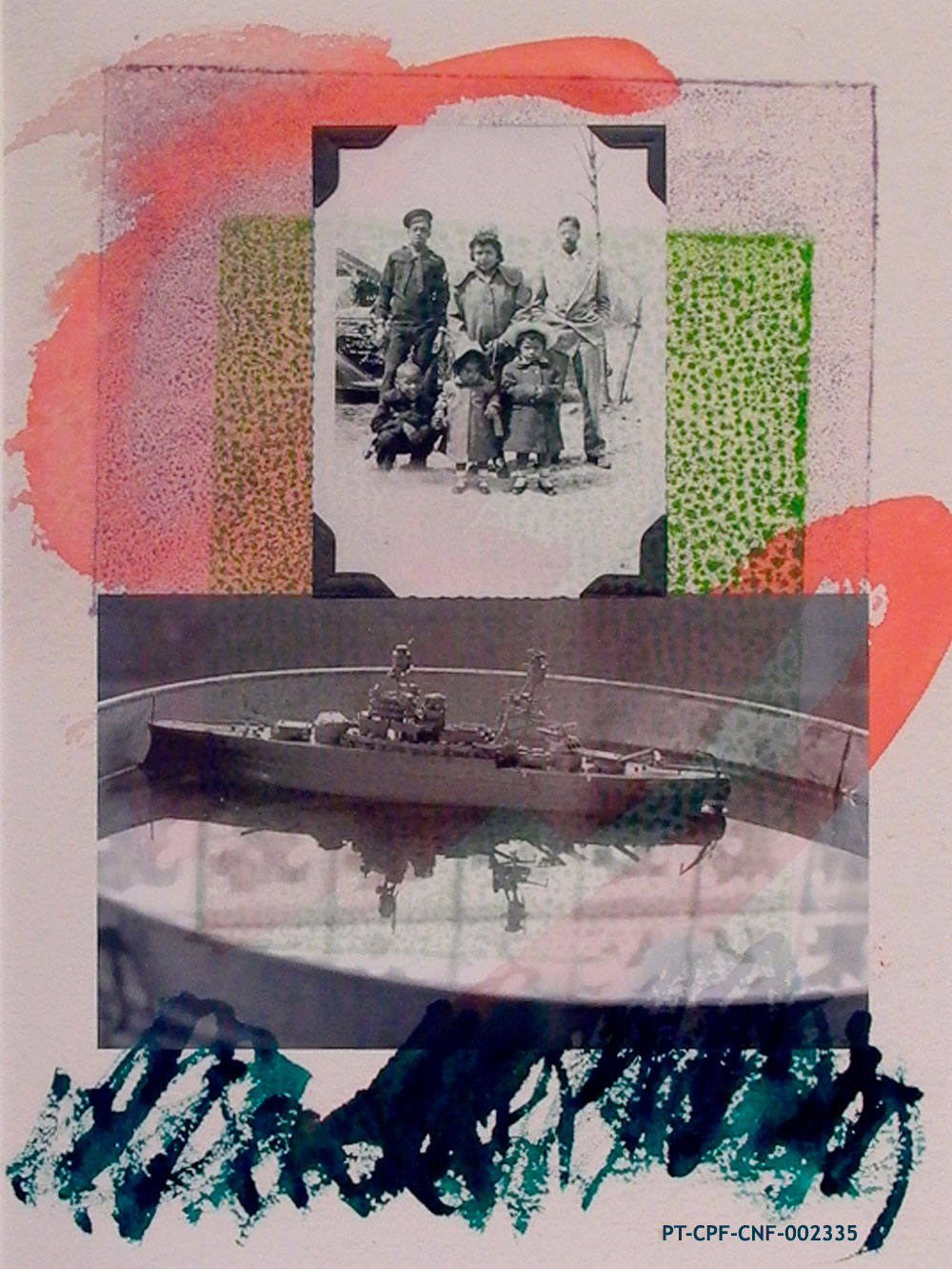Documento Mês
Fundos e Coleções

Clarissa Sligh (1939)
Passages, Family 3, 2002 (Archive pigmented ink jet print)
PT/CPF/CNF/002335
Passages, Family 3, 2002 remete-nos não só para estereótipos históricos e contemporâneos dos afro-americanos, mas também para a capacidade de transformar a perseguição mortal num jogo – uma questão que ultrapassa as fronteiras raciais.
Entretecendo política com arte e usando fotografias de família, Clarissa Sligh direciona o olhar do público para as relações sociológicas centradas em experiências com a comunidade afro-americana.
Como guardiã do álbum de fotografias da sua família, Sligh explorou as diferenças entre a impressão projetada na postura impecável da sua família em fotografias instantâneas e as suas memórias dos segredos escondidos entre essas imagens. Sligh recordou uma cama partilhada com um irmão, as intenções ilícitas de um tio, o conforto da cozinha da avó e a confusão de um parto em casa. Ao combinar as memórias dessas fotografias instantâneas com palavras escritas à mão, Sligh cria uma nova estrutura para suas memórias e identifica um ponto de partida para obter um objetivo mais rico das influências e atitudes que projetam a sua identidade.
Passages, Family 3, 2002 speaks to historic and contemporary stereotyping of African Americans, but also refers to an ability to turn the deadly pursuit of was into a game – an issue that crosses racial boundaries.
Weaving politics with art and using family photographs, Clarissa Sligh directs her audience gaze to sociological relationships centered on experiences with the African American community.
As the keeper of her family album of photographs, Sligh began to explore the differences between the impression projected in the best-foot-forward posture of her family snapshots, and her memories of the secrets that were hidden among those images. Sligh began to remember a shared bed with a brother, the illicit intentions of an uncle, the comfort of her grandmother’s kitchen and the confusing wonder of a home birth.
By combining the snapshots that these memories referenced with hand written words Sligh creates a new framework for her memories and identifies a starting point to gain a richer scope of the influences and attitudes that designed her identity.